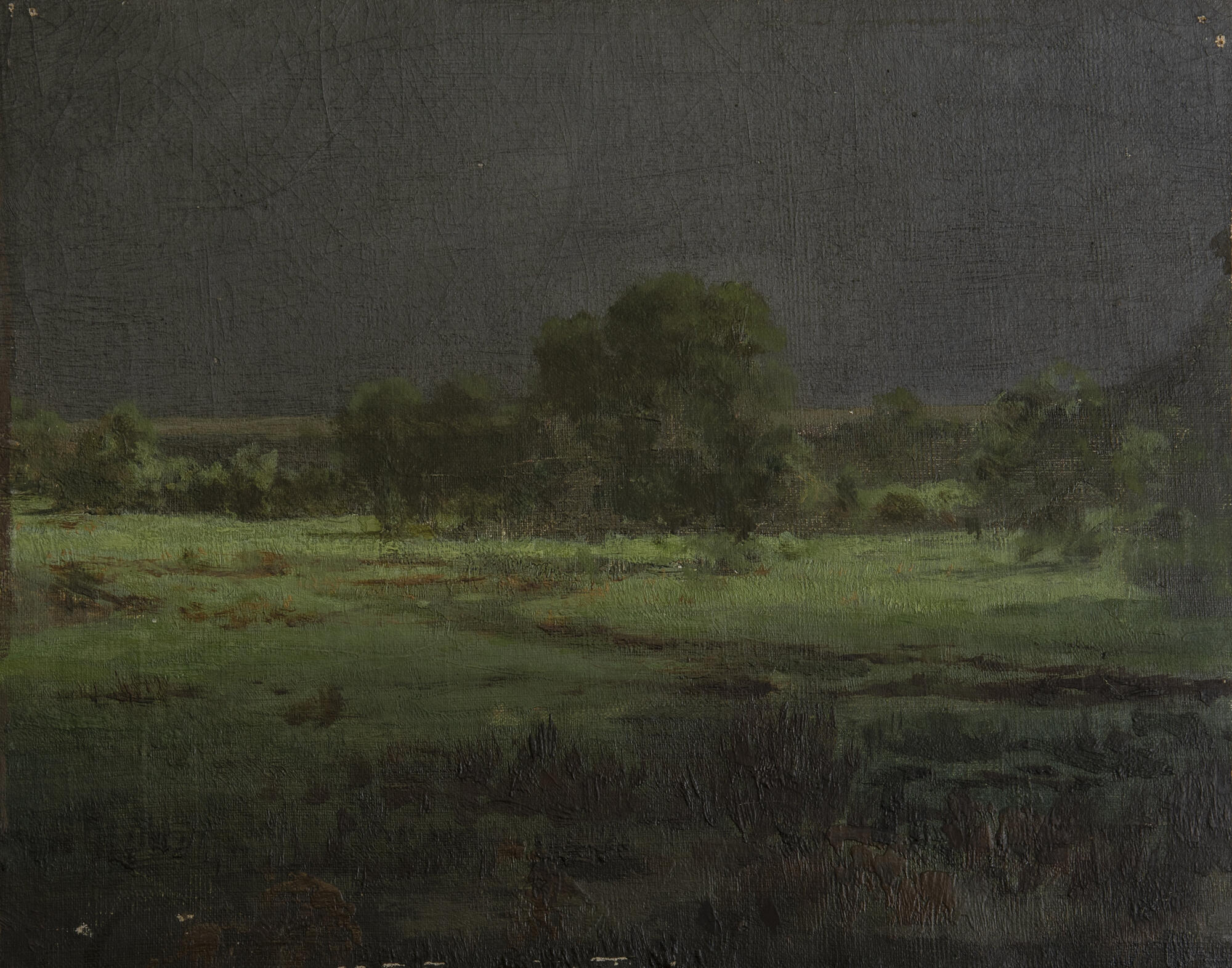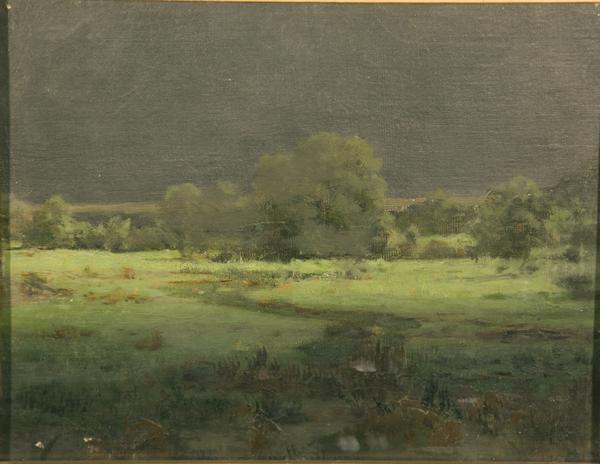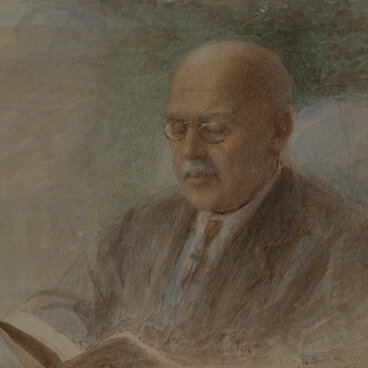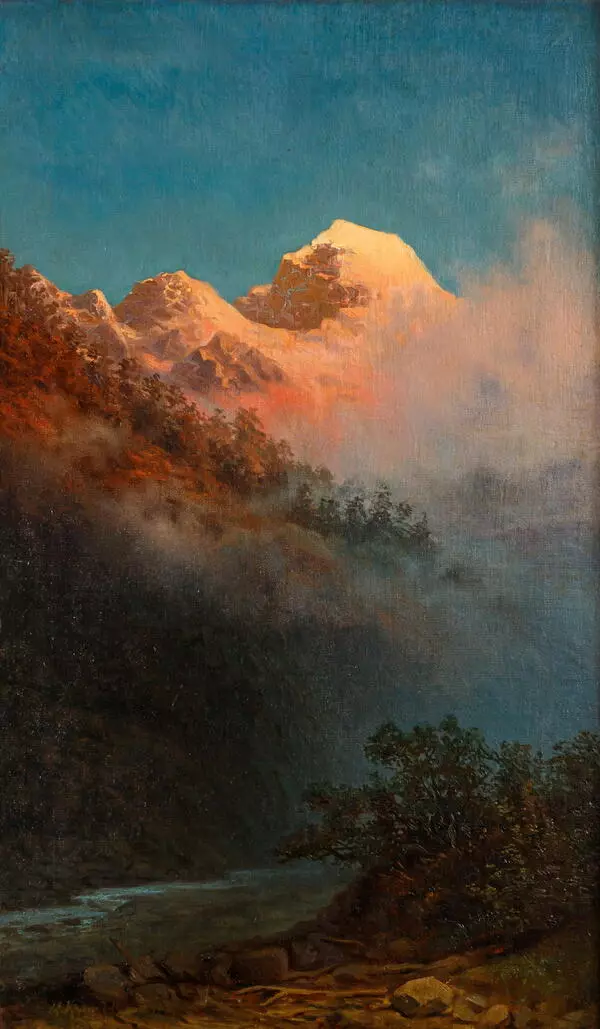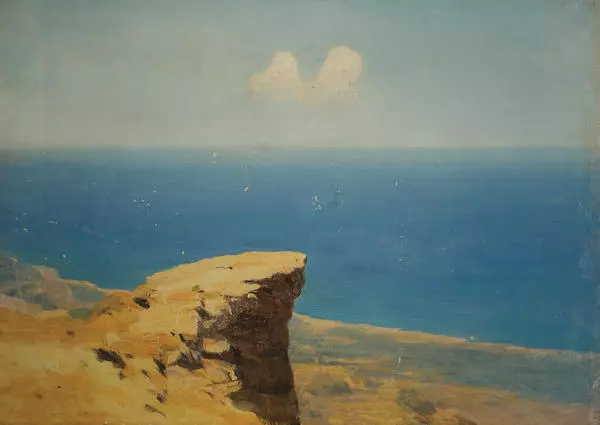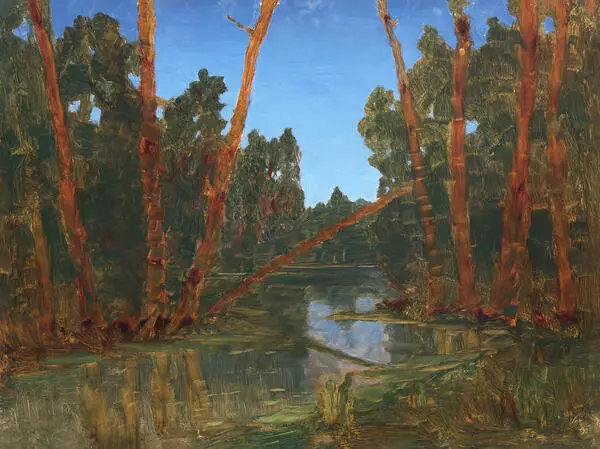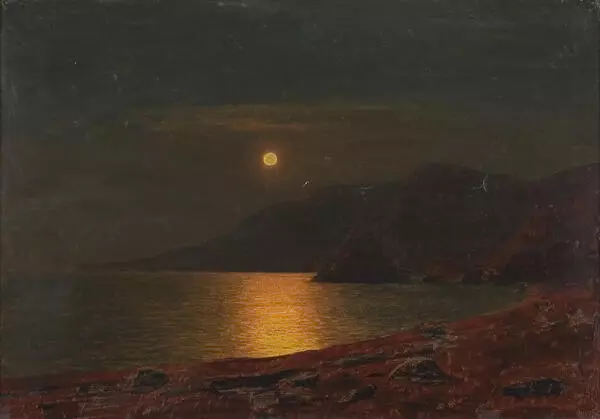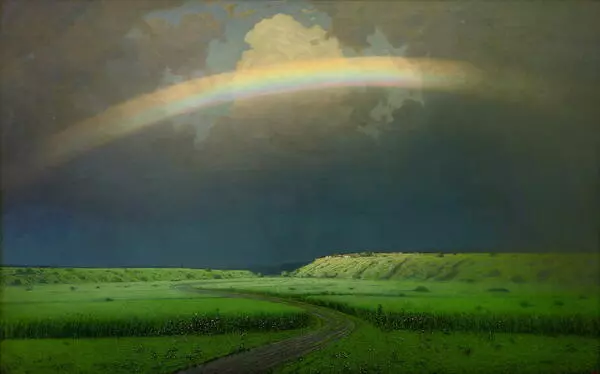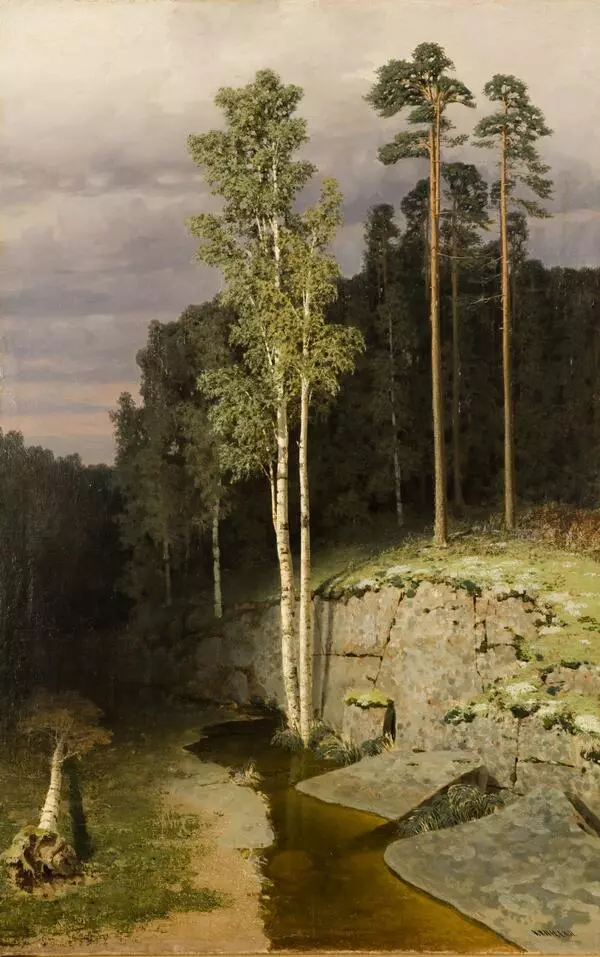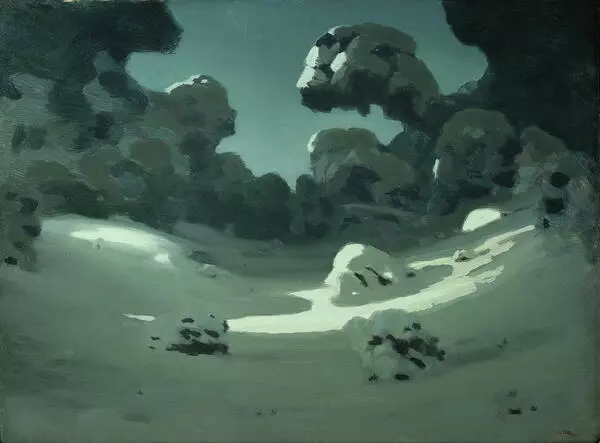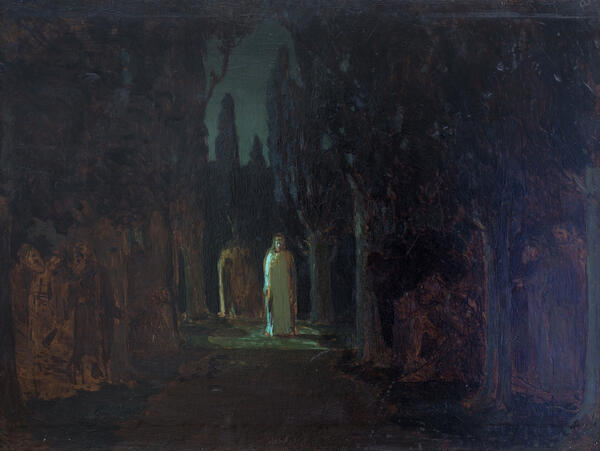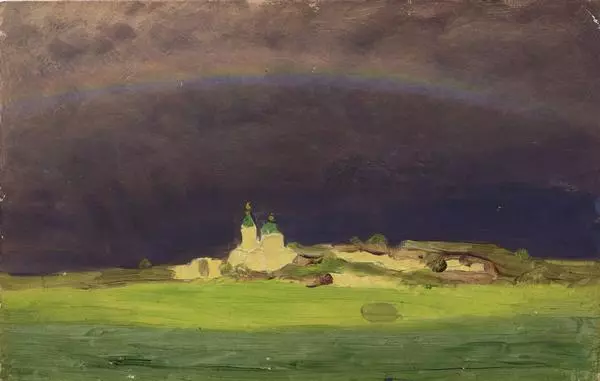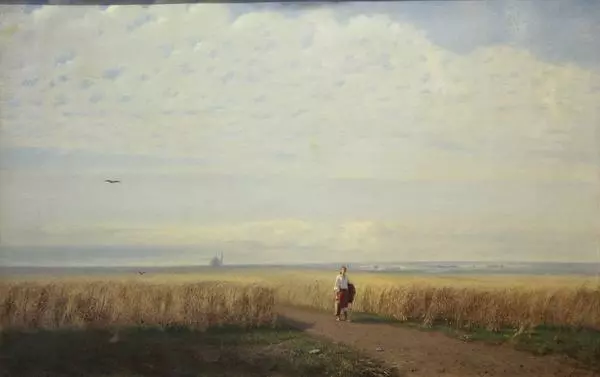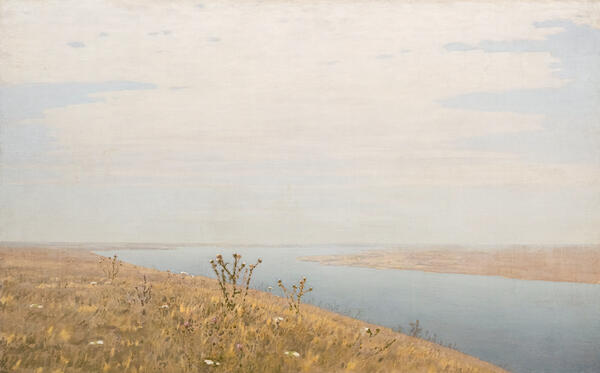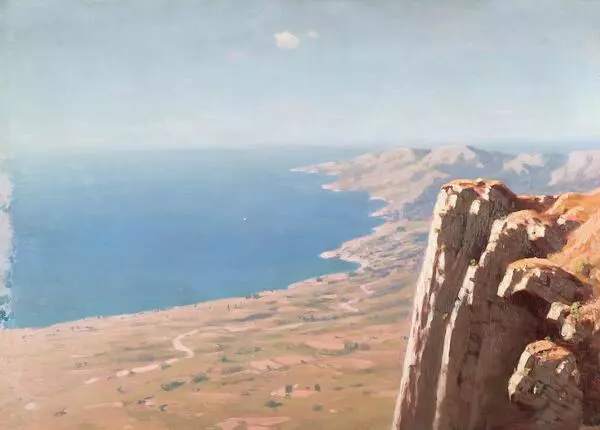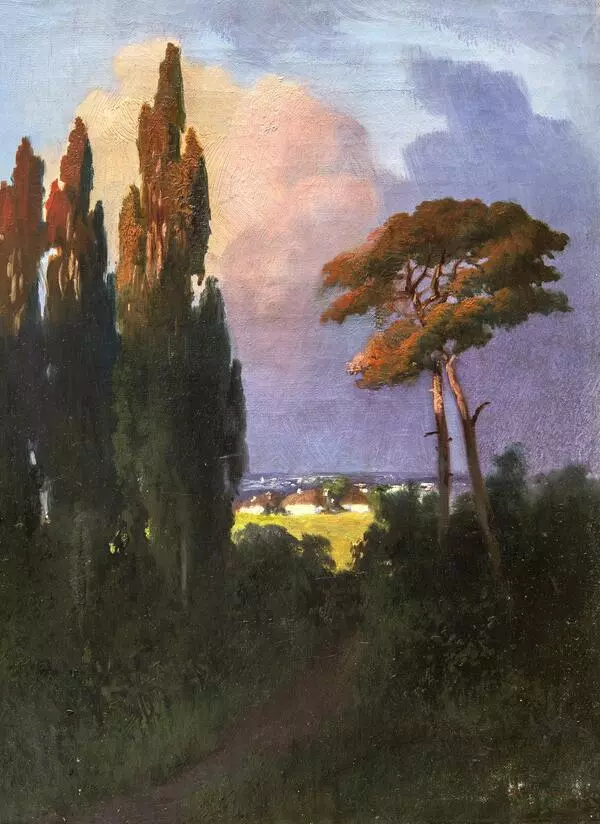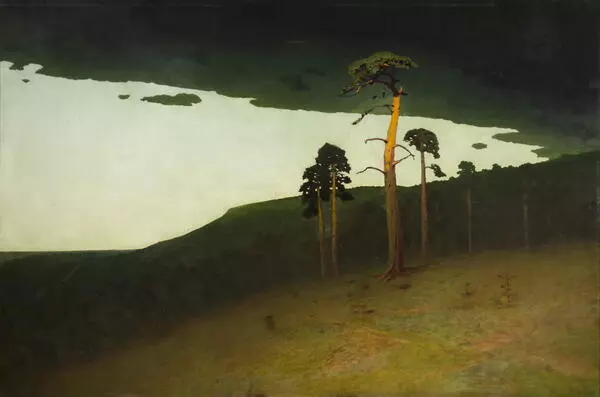The collection of the Ostrogozhsk Museum features a painting titled “A Meadow after Rain” by Arkhip Kuindzhi. From the first look at this landscape painted from life, the viewer is immersed in this mysterious and dreamlike night world.
Arkhip Ivanovich Kuindzhi (1841–1910) was born into a family of a poor shoemaker of Greek descent in Mariupol. Although the future artist was forced to work for wealthy citizens from an early age, his interest in painting turned out to be stronger than financial difficulties, and as a young man, he went to Ivan Aivazovsky asking for permission to study with him. However, the famous marinist refused to mentor the young artist and advised him to go and study in Odessa or St. Petersburg. It was only on the third try, that Kuindzhi managed to enter the Academy of Arts as a non-matriculated student.
The artist first came into the spotlight during the 1868 academic exhibition where he presented his painting “A Tatar Village on Crimea’s South Coast by Moonlight”. Four years later, as a graduate of the Academy of Arts, Kuindzhi participated in the first exhibition of the Society for Traveling Art Exhibitions and achieved resounding success with his painting titled “Autumn Weather”. After that, his works were exhibited in England and Austria. The painting “On the Valaam Island” was acquired by Pavel Tretyakov, and “The Snow” was awarded the Bronze Medal at an international exhibition in London.
Paintings by Arkhip Kuindzhi left no one indifferent. Each of his paintings was a revelation: “Dnieper in the Morning” had bright and strong light streaming from the canvas, while “Evening in Ukraine” captivated with its poetic down-to-earth atmosphere and shimmering serenity. Turgenev and Dostoevsky admired his art. The latter called Kuindzhi’s paintings “a frozen prayer”. Like most of his contemporaries, Kuindzhi turned to biblical scenes. However, the dominant genre in his art was the landscape.
“Moonlit Night on the Dnieper” is often considered the artist’s greatest masterpiece. “This is not a painting, this is nature on a canvas, ” the critic Aleksey Suvorin wrote about it. In his landscapes, Arkhip Kuindzhi sought light in a way that some people seek God. Nothing made him deviate from his path: neither the ironic strokes of fate, the caustic criticism, nor the easy money. Having worked his way from a poor shoemaker’s son to a millionaire artist, he stayed true to himself and remained a man in an old black frock coat, traveling third class, not distracted by immediate satisfaction, and a hopeless individualist. When fame became a hindrance to his artistic journey, he simply renounced it by refusing to exhibit his paintings and staying in his workshop.
Arkhip Ivanovich Kuindzhi (1841–1910) was born into a family of a poor shoemaker of Greek descent in Mariupol. Although the future artist was forced to work for wealthy citizens from an early age, his interest in painting turned out to be stronger than financial difficulties, and as a young man, he went to Ivan Aivazovsky asking for permission to study with him. However, the famous marinist refused to mentor the young artist and advised him to go and study in Odessa or St. Petersburg. It was only on the third try, that Kuindzhi managed to enter the Academy of Arts as a non-matriculated student.
The artist first came into the spotlight during the 1868 academic exhibition where he presented his painting “A Tatar Village on Crimea’s South Coast by Moonlight”. Four years later, as a graduate of the Academy of Arts, Kuindzhi participated in the first exhibition of the Society for Traveling Art Exhibitions and achieved resounding success with his painting titled “Autumn Weather”. After that, his works were exhibited in England and Austria. The painting “On the Valaam Island” was acquired by Pavel Tretyakov, and “The Snow” was awarded the Bronze Medal at an international exhibition in London.
Paintings by Arkhip Kuindzhi left no one indifferent. Each of his paintings was a revelation: “Dnieper in the Morning” had bright and strong light streaming from the canvas, while “Evening in Ukraine” captivated with its poetic down-to-earth atmosphere and shimmering serenity. Turgenev and Dostoevsky admired his art. The latter called Kuindzhi’s paintings “a frozen prayer”. Like most of his contemporaries, Kuindzhi turned to biblical scenes. However, the dominant genre in his art was the landscape.
“Moonlit Night on the Dnieper” is often considered the artist’s greatest masterpiece. “This is not a painting, this is nature on a canvas, ” the critic Aleksey Suvorin wrote about it. In his landscapes, Arkhip Kuindzhi sought light in a way that some people seek God. Nothing made him deviate from his path: neither the ironic strokes of fate, the caustic criticism, nor the easy money. Having worked his way from a poor shoemaker’s son to a millionaire artist, he stayed true to himself and remained a man in an old black frock coat, traveling third class, not distracted by immediate satisfaction, and a hopeless individualist. When fame became a hindrance to his artistic journey, he simply renounced it by refusing to exhibit his paintings and staying in his workshop.
